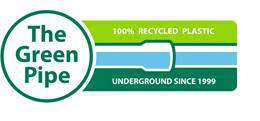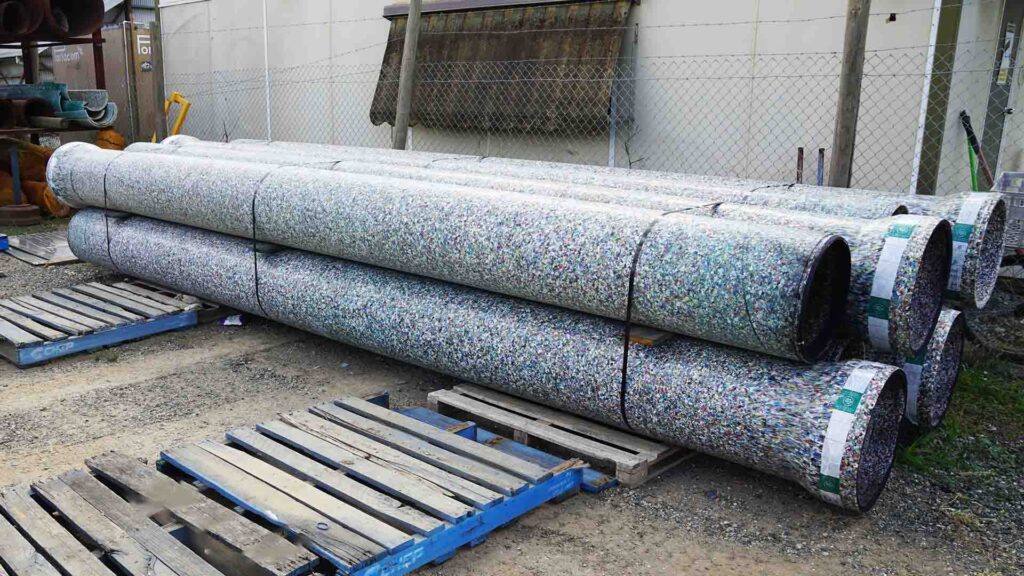When it comes to civil infrastructure, storm water systems, and agricultural irrigation, pipe material matters—not just for performance, but for long-term environmental impact. As the construction and farming industries move toward more sustainable practices, choosing between recycled plastic pipes and traditional concrete pipe is becoming a key decision point. Here’s how the two materials compare from an environmental perspective.
1. Raw Material & Resource Use
Concrete Pipes:
- Made from cement, sand, and aggregates—materials that require extensive mining and energy to extract.
- Cement production alone contributes up to 8% of global CO₂ emissions.
- Concrete pipes are heavy and resource-intensive to manufacture and transport.
Recycled Plastic Pipes (e.g. The Green Pipe):
- Made from post-consumer plastic waste such as milk bottles and packaging.
- Diverts plastic from landfills and reduces demand for virgin materials.
- Requires less energy to produce than concrete, resulting in a lower carbon footprint.
✅ Winner: Recycled Plastic Pipes
2. Carbon Emissions & Energy Use
Concrete Pipes:
- High embodied energy during production.
- Transportation and installation require heavy machinery due to their weight.
- Typically has a higher greenhouse gas emission profile across its lifecycle.
Recycled Plastic Pipes:
- Significantly lower energy requirements in production.
- Lightweight design means reduced fuel use during transport and installation.
- Helps cut total project emissions and energy use.
✅ Winner: Recycled Plastic Pipes
3. Installation & Longevity
Concrete Pipes:
- Durable, but installation is labour- and machinery-intensive.
- Prone to cracking under stress or ground movement, which can lead to costly repairs.
- Corrosion and chemical erosion can reduce lifespan in harsh environments.
Recycled Plastic Pipes:
- Lightweight and flexible, making them faster and safer to install.
- Resistant to corrosion, chemicals, and root intrusion.
- Tested to meet Australian standards (AS1462 & AS2566), with proven long-term performance underground.
✅ Winner: Recycled Plastic Pipes
4. End-of-Life & Circular Economy
Concrete Pipes:
- Difficult to recycle and often ends up as construction waste.
- Demolition and disposal are energy-intensive and costly.
Recycled Plastic Pipes:
- Made from recycled materials and potentially recyclable at end of life.
- Supports a circular economy by keeping valuable resources in use longer.
✅ Winner: Recycled Plastic Pipes
Final Thoughts
While concrete pipes have been a staple in infrastructure for decades, recycled plastic piping offers a cleaner, greener alternative that aligns with modern sustainability goals. At The Green Pipe, we manufacture piping solutions that not only perform in the field but also help reduce environmental impact at every stage—from production to installation and beyond.
If you’re planning a stormwater, irrigation, or drainage project, consider making the switch to recycled plastic pipes — a smarter choice for the environment and your bottom line.
Interested in learning more?
Call us on 03 5480 7060 email admin@thegreenpipe.com.au to find out how The Green Pipe can benefit your next project.

